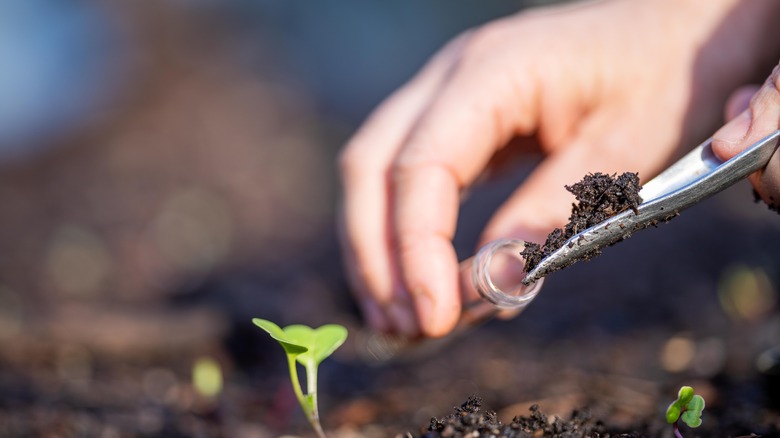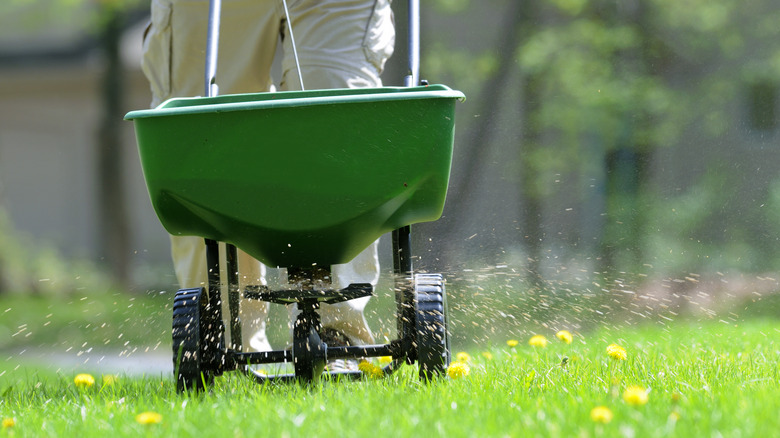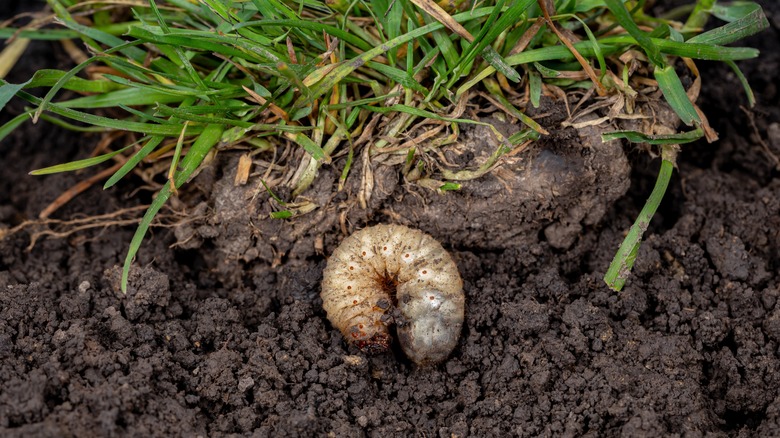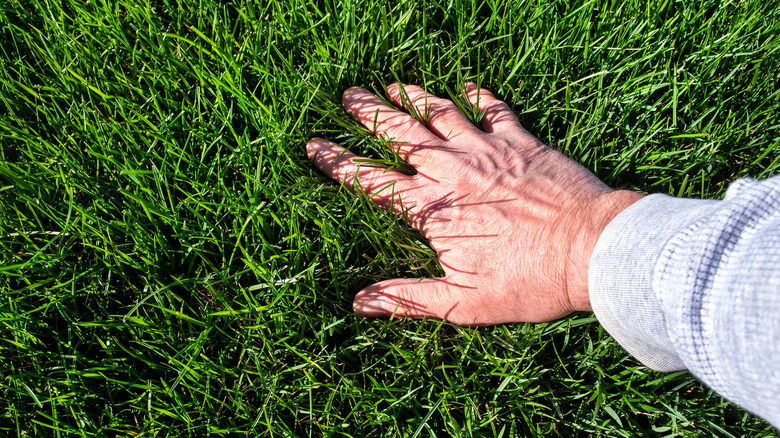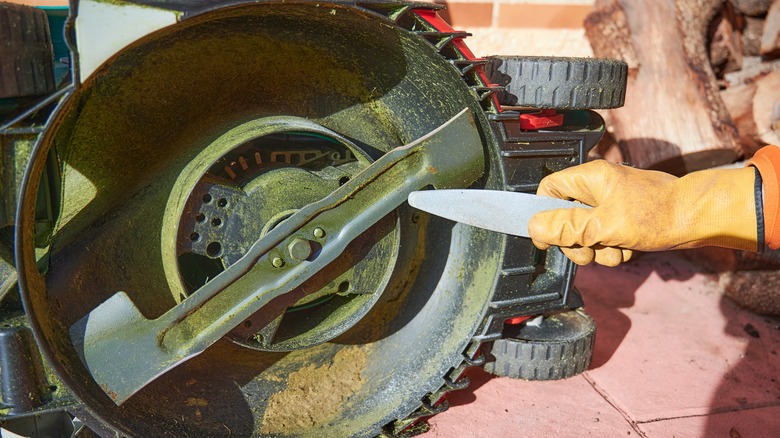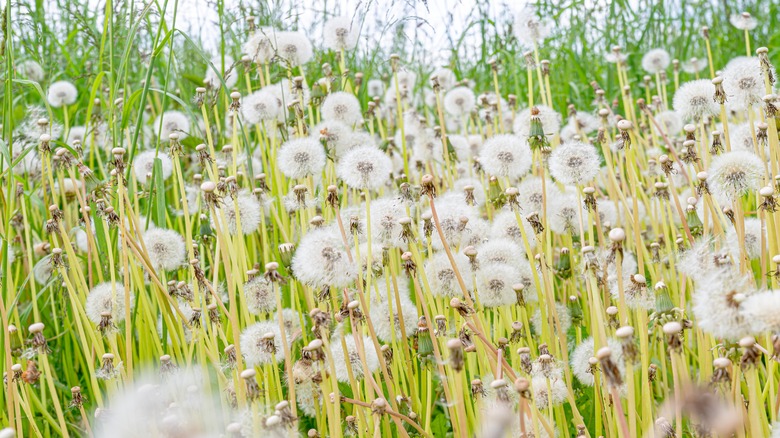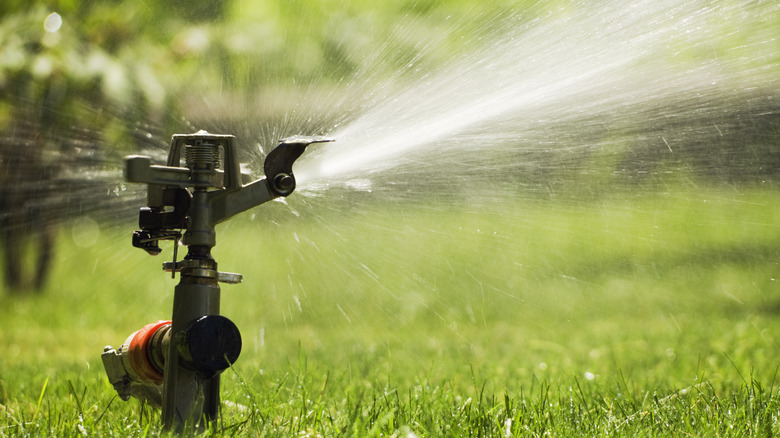Crucial Summer Lawn Care Tasks You Shouldn't Skip
Summer is a time for pool parties, barbecues, and relaxing vacations. But, it is also the time to make sure your lawn gets the TLC it needs. We've all seen it — or perhaps even experienced it ourselves — with the high summer temperatures and periods with little to no rain, a lawn can really take a beating. The grass can easily become overgrown or turn brown and die. Other times, a few weeds can quickly multiply and take over the whole lawn.
Everyone wants to have a lush and green lawn that will increase their curb appeal and make them want to spend more time outside during the warm summer. However, without putting in some effort and keeping up with important lawn care tasks, that dream will never turn into reality. Keep reading to learn more about the crucial lawn care tasks you mustn't skip this summer if you want to achieve that perfectly manicured lawn of your dreams.
Test your soil
A healthy lawn starts with healthy soil. If your soil's pH is off or has imbalanced levels of nitrogen, phosphorus, potassium, or other nutrients, it can have a negative impact on the growth and overall health of your lawn. You can measure the pH of your soil yourself, or you can buy a testing kit to send a sample to a lab for analysis.
Once you have the results from your soil analysis, determine the next steps for enhancing its quality. For example, if your soil is too basic (the pH is too high), then look for a more acidic fertilizer containing sulfur to lower the pH. Conversely, if the soil is too acidic, you'll want to add lime or find a fertilizer that will increase its pH. There are also fertilizers formulated to increase the levels of different nutrients to better balance the soil; the soil test results you receive will indicate which type of fertilizer to apply. Aim to retest your soil every few years to make sure it is still providing optimal growing conditions.
Know when to fertilize the lawn
Fertilizer is a key component of a healthy lawn care routine. But, did you know that when you fertilize is also important? Fertilizing your lawn during those hot, dog days of summer could threaten the health of your lawn. Fertilizing when it is too hot can exacerbate the damage caused by heat stress. Too much fertilizer can lead to a buildup of salt along the roots, which can lead to restricted water flow towards the top of the plants.
If you have warm- or cool-season grass, you want to fertilize the lawn towards the late spring, before temperatures get too warm. June is generally the best time for warm-season grasses, while May is typically ideal for most cool-season varieties. If you're going to apply a second round of fertilizer to your grass, wait until August or September, when the temperatures have started cooling down again. This second round can help your grass store more energy to be better able to withstand the colder winter temperatures that are approaching.
Get rid of grubs
Protecting your lawn against grubs is another important task you shouldn't overlook. Grubs are scarab beetle larvae that are found across the United States. These larvae like to eat the roots of many plants and shrubs, including grass. Moreover, when there are lots of grubs in your yard, it can attract other animals that can cause further issues. Moles, skunks, and raccoons all eat grubs. But, when they come for a little snack, they may also damage your lawn by digging up the grass as they hunt.
If you notice patches of brown grass that are irregular in shape, it is often an indication that you're facing a grub problem. There are a few different things you can try to get rid of grubs. One is to introduce one of their natural predators that won't cause further harm to your lawn: nematodes. Nematodes, which you can find at most garden centers, are little worms that will feed on the grubs. Apply them one or two times a year as needed to keep the grubs away. Milk spore is another natural treatment to consider. A type of bacteria, the spores will work to effectively clear up the infestation. However, the results won't be instantaneous, so you might want to apply the spores alongside other treatment options.
Don't let your grass grow too long or cut it too short
Many homeowners are unclear on how frequently they should mow their lawn and just how short they should be cutting their grass. Fortunately, this doesn't have to be a guessing game. The correct answer will depend on the type of grass you have. If you have cool-season grass, such as fescue, ryegrass, or Kentucky bluegrass, set your mower blades to a height between three and four inches. When the grass grows to a height between four and six inches, it's time to take the mower out.
Those with St. Augustine grass, Bermuda grass, Zoysia grass, and other warm-season grasses can cut their lawns a bit shorter. These grasses can be cut down to around two and a half inches. They should be mowed once that have grown to three to four inches. A general rule to follow for both cool- and warm-season grasses is to cut one-third of the grass height.
Be sure to monitor the height of your lawn and mow it as needed. You don't want your grass to get too long, as it can cause the lawn to thin and increase the risks for fungal diseases or pests. Mowing your lawn too short isn't advisable, either. It can decrease the amount of sun it receives, reducing its ability to photosynthesize. This can have a negative affect on the health and appearance of your lawn.
Keep your mower blades sharp
Letting your mower blades become dull is a lawn care mistake you don't want to make. If you've ever tried to cut with a dull knife, you can visualize exactly what will happen to your grass. Instead of a neat and precise cut, the dull blades are going to end up tearing the top of the grass off. When the grass is torn, instead of cleanly cut, the chances of your lawn being plagued by pests or fungal diseases increases.
Another benefit of sharp mower blades is that your lawn is going to look better. Cleanly cut grass will look much smoother than the torn and jagged pieces left behind by a dull blade. Finally, sharp mower blades will just make your life that much easier. You'll find that your mower is easier to push and doesn't drag as much when its blades are sharp compared to when they have been worn down.
Keep weeds under control
The saying, "if you give them an inch, they'll take a mile," is true for many different scenarios. One of these is weeds. No one wants to see their lawn overgrown with crabgrass, dandelions, thistle, or other weeds. However, if you don't take steps to get rid of weeds and prevent them from coming back, that's precisely what you can expect to see.
There are several different approaches to weed control, depending on your available time and comfort level with applying different chemicals to your lawn. The method that is the safest for your lawn and the environment, is to walk your yard and pull any weeds you find by hand or with a weeding tool. If you choose this approach, be sure to get out as much of the root as you can to prevent it from growing right back.
You can also find herbicidal weed killers online and in local stores. If you'd prefer to stay away from potentially harmful chemicals, there are more natural solutions. You can even find many weed killers right in your kitchen. For example, a homemade solution of salt, white vinegar, and liquid dish soap can cause the weeds to shrivel up and die. Salt and vinegar remove necessary moisture, while the dish soap works as a surfactant, preventing the leaves from absorbing the spray and leaving it to sit on the weed's outer surface.
Know the right time to water the lawn
Knowing when to water your lawn is important if you want to keep your grass looking its best. To start, remember that grass doesn't need to be watered year round. Rain and dew and often sufficient to keep it growing well. However, when it is very hot and dry, you may want to pull out the sprinklers to keep it from drying out and dying.
Just don't pull them out during the heat of the day. If you water the grass when it is too hot outside, the water is going to evaporate too quickly, and it won't actually benefit your lawn. Between 6:00 and 10:00 a.m. is the best time to water grass. Temperatures will be lower during these earlier morning hours, so the water will be able to soak into the soil before it evaporates.
Alternatively, you can water in the evening, after about 6:00 p.m., once it has cooled back down. Just don't water too late to make sure the grass has time to dry. Aim to be finished watering by around 8:00 p.m. to prevent the grass from staying wet overnight, which can increase the likelihood that you'll face a problem with fungus or disease.
Take measures to prevent dog urine from killing grass
Dog urine contains high amounts of nitrogen. If you have dogs you regularly pee in the same areas of the yard, the high concentration of nitrogen is likely to kill the grass, leaving you with ugly brown patches that stand out against the rest of your lush, green turf. If you want to avoid this eyesore, there are a few things you should do.
First, try to hose off the sections of the yard where your dog pees as promptly as possible. Water will dilute the nitrogen concentrates to make them less potent. Similarly, you can help dilute the urine at the source by keeping your dog well hydrated.
Avoid fertilizing any areas of the yard where your dog frequently pees. Remember, fertilizers are formulated with nitrogen, and since these segments of the lawn have already been given such a high dose of the element, any more is going to be overkill and may result in burnt grass.

